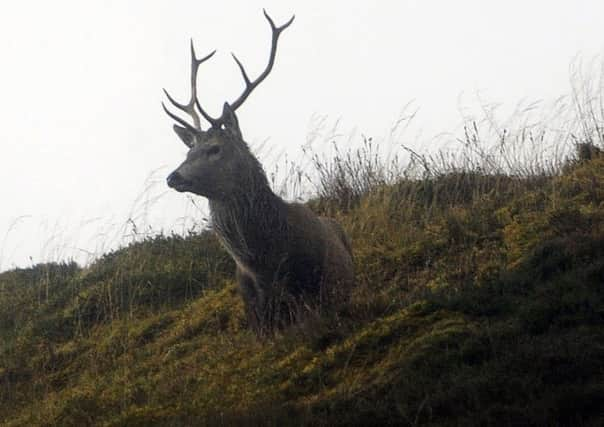Helen Todd: 4.3m reasons for enjoying the great outdoors


It’s no surprise to hear that going for a walk is really good for us. Indeed half the Scottish population is already convinced, enjoying a regular weekly walk with all the benefits to health and well-being that brings. Scotland is well known as a walking destination for tourists too, with VisitScotland estimating that visitors from across the UK enjoyed 4.3 million Scottish walks in 2013. There are, of course, huge economic benefits arising from the approximately £2.6 billion of annual expenditure related to visits to the outdoors for recreation. Those individual cups of coffee all add up to make a huge contribution to the rural economy and help keep businesses across Scotland open.
But walking isn’t an indoor activity and the main attraction is the pleasure gained from walking in the natural environment, especially in Scotland’s world-famous hills and mountains. For many people, their perception is that Scotland’s upland landscape is primarily one of wide open spaces and boundless views. But is this really how it should be?
Advertisement
Hide AdAdvertisement
Hide AdThis country is no untouched wilderness and there are a growing number of voices questioning the traditional land management practices which influence our habitats, landscapes and the wildlife that lives there.
For a start, where are all the trees? Scotland has one of the lowest proportions of forest cover in Europe at just 17 per cent, which is less than half of the European average of 35 per cent. There are huge swathes of land shown on maps as deer forests with barely a tree to be seen, interspersed with large blocks of dull conifer plantations. Elsewhere areas of planted woodland are protected behind deer fencing, while other occasional trees cling precariously to craggy outcrops or steep-sided gullies. This is clearly a land which is out of balance if few young trees can take hold naturally, leaving us with bare, open hillsides.
So why aren’t there more trees, and why does this matter? Much of our uplands are managed as grouse moor or for deer stalking and are not beacons of biodiversity. According to the Forestry Commission, “the most widespread single factor inhibiting native woodland recovery is high levels of browsing and grazing impacts” – that is, there are too many deer or sheep on the hills. Numbers of deer in particular are kept unnaturally high in many areas, and overgrazing means that a significant proportion of our native woodlands are in a poor state, while new woodland cannot get established without fencing to keep deer out.
The recent launch of the Rewilding Britain charity and the current passage of the Land Reform Bill through the Scottish Parliament both demonstrate that there is a public appetite to question the status quo in terms of land management. A discussion is needed which balances landowners’ rights and responsibilities while putting the public interest, in terms of the need to protect our biodiversity and the enjoyment of our landscapes and wildlife, at the top of the agenda.
This is not just based on a desire to have prettier landscapes for walkers to enjoy. A range of factors are adversely affecting our environment and if we are to rise to the challenge of coping with these threats then we need a biodiverse, resilient and robust nature, starting with more native trees. There are threats from climate change and new pests and diseases, and there is a need to protect our ecosystems in order to ensure we have clean air, clean water and a lower risk of floods.
To see what Scotland could look like, there are already some estates where the natural processes of woodland regeneration have been allowed to flourish, such as at Glen Feshie estate in the Cairngorms, Creag Meagaidh national nature reserve near Laggan, or Mar Lodge near Braemar. Here a magical transformation has taken place within a relatively short space of time. A rich abundance of flora and fauna is returning and within a few years the landscape has changed utterly. Here a balance has been brought back through reducing deer numbers by culling, and in time deer numbers will be able to rise again to restore natural grazing patterns within the woodlands.The current land reform debate is giving us an exciting opportunity to look at land management in terms of upholding the public interest in land. Walkers and local businesses can only gain from this.
• Helen Todd, campaigns & policy manager, Ramblers Scotland